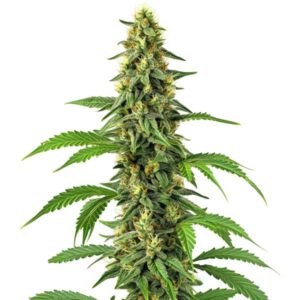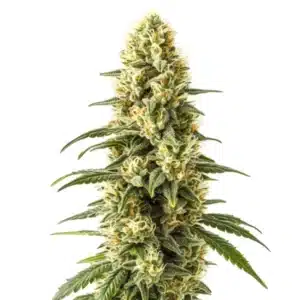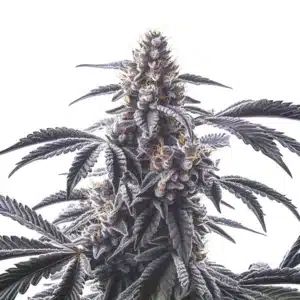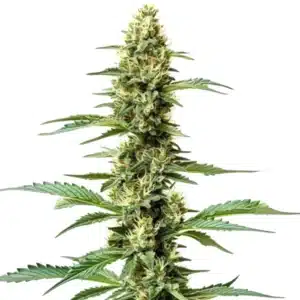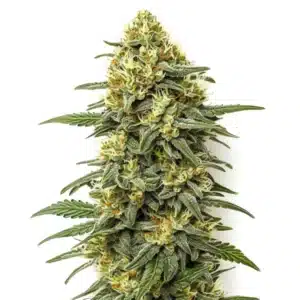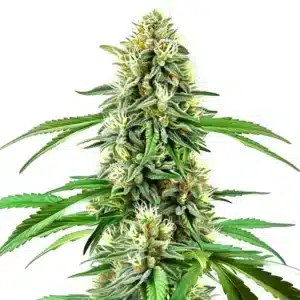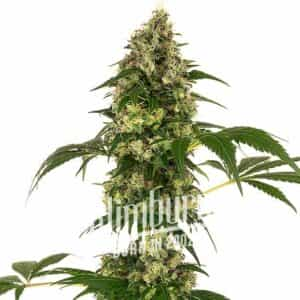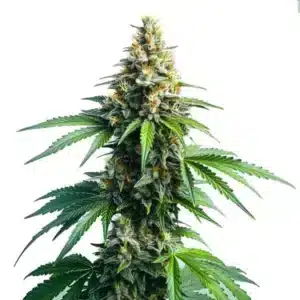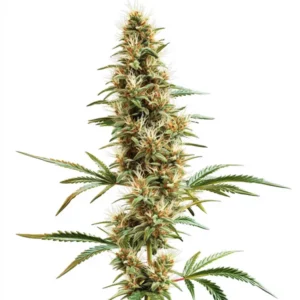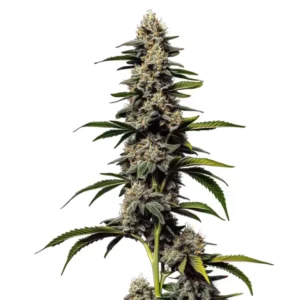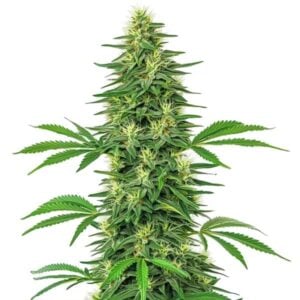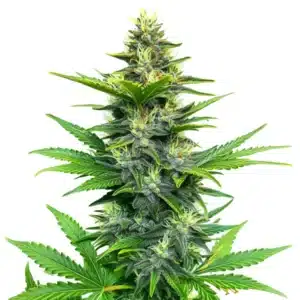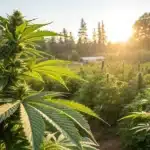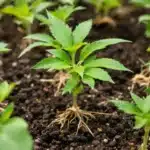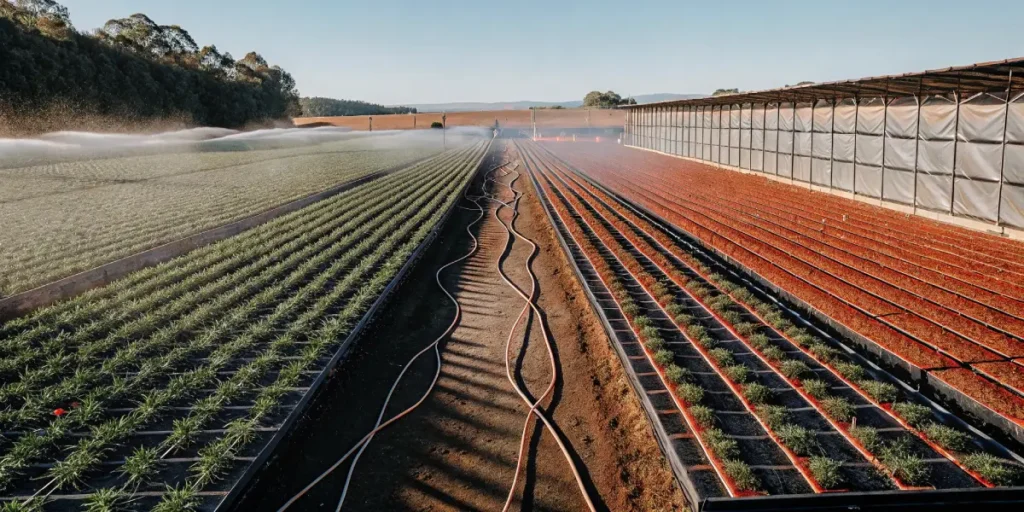
Indoor vs Outdoor Cannabis Water Management
Choosing between indoor and outdoor cannabis cultivation brings a variety of challenges. One crucial aspect is how you manage water for your plants. Indoor vs outdoor cannabis water management involves knowing the unique needs of each environment. Each setting demands specific strategies to ensure healthy growth.
Indoor growers often contend with controlled environments. Watering needs might seem straightforward, but they require precise attention. Outdoor growers face varying weather conditions, impacting water needs. Both methods share a goal: optimal water use for thriving plants.
Recommended Strains
Factors like climate, plant size, and growth stage affect water requirements. Indoor settings allow for more control, whereas outdoor environments can be unpredictable. Blimburn Seeds offers strains like The Purps, which can thrive in both settings with the right care.
Indoor Cannabis Water Conservation Techniques
Indoor cultivation offers control over many factors, including temperature and humidity. This control can lead to more efficient water use. Indoor cannabis water conservation techniques aim to reduce waste and ensure plants get what they need.
Using moisture meters can help determine the precise amount of water your plants require. Overwatering is a common mistake among beginners. These tools prevent it by letting you know when your plants truly need water. Strains like Blue Dream are sensitive to overwatering, so these tools are invaluable.
Implementing water-saving practices such as collecting and reusing runoff can further enhance indoor cannabis water conservation techniques. By redirecting excess water back into the system, growers can efficiently use every drop, minimizing waste and promoting sustainability. Additionally, regular system checks ensure that there are no leaks or inefficiencies that could compromise water conservation efforts.
Leveraging technology like smart irrigation systems can enhance indoor cannabis water conservation techniques. Automated systems provide precise control over watering schedules, adapting to the specific needs of your plants. This approach not only conserves water but also optimizes plant health by ensuring they receive the correct amount of moisture at the right time.
Optimizing Water Use with Smart Systems
Smart irrigation systems can make a big difference. These systems automate watering schedules, ensuring plants receive consistent moisture. This technology helps avoid common pitfalls like forgetting to water or overwatering.
Drip irrigation systems are popular among indoor growers. They deliver water directly to the plant’s roots, minimizing waste. This method is particularly beneficial for strains like Gorilla Glue 4, which require consistent hydration.
The integration of smart sensors can further optimize water use with smart systems. These sensors monitor soil moisture levels, providing real-time data to adjust watering schedules automatically. This ensures that plants receive the exact amount of water needed, promoting healthier growth and reducing water waste.
Smart systems can also be programmed to adjust based on environmental changes. For instance, during warmer periods, the system can increase watering frequency, while reducing it during cooler times. This adaptability is crucial for both indoor vs outdoor cannabis water management as it maintains optimal water levels throughout varying conditions.
Promos & Deals
Outdoor Cannabis Watering Schedule Optimization
Outdoor cannabis plants face different challenges compared to indoor ones. Weather conditions, such as rain and temperature fluctuations, influence water needs. Outdoor cannabis watering schedule optimization is key to ensuring healthy growth.
Setting up a watering schedule that aligns with the natural environment is beneficial. Early morning is often the best time to water. This timing allows the plants to absorb moisture before the heat of the day causes evaporation.
Outdoor cannabis watering schedule optimization also involves tailoring watering practices to seasonal changes. During dry spells, increasing the frequency and depth of watering can help sustain plant health. Conversely, reducing water during wet seasons prevents over-saturation and promotes optimal growth conditions.
Incorporating mulching practices contributes to outdoor cannabis watering schedule optimization by retaining soil moisture and reducing evaporation. A layer of organic mulch can insulate the soil, keeping it cooler and maintaining consistent moisture levels. This approach not only conserves water but also supports healthier plant development.
Choosing the Best Irrigation Systems for Outdoor Cannabis Cultivation
Irrigation systems are crucial for outdoor cannabis cultivation. They ensure plants receive consistent moisture, even in dry spells. The best irrigation systems for outdoor cannabis cultivation are those that suit your specific growing conditions.
Drip irrigation is a popular choice for outdoor growers. It delivers water directly to the roots, reducing waste. This system is effective in preventing water runoff and soil erosion. It’s ideal for growers who want to minimize manual labor.
Sprinkler systems are another option, though they can lead to water loss through evaporation. In windy areas, water may not reach the intended plants. Adjusting the angle and timing of sprinklers can help mitigate these issues.
The best irrigation systems for outdoor cannabis cultivation also consider the terrain and soil type. In hilly areas, contouring the land can prevent water runoff and enhance absorption. Tailoring irrigation systems to the landscape ensures efficient water use and promotes uniform plant growth.
Differences in Water Needs for Indoor vs Outdoor Cannabis
The differences in water needs for indoor vs outdoor cannabis primarily stem from environmental factors. Indoor plants rely on controlled conditions, while outdoor plants adapt to nature’s unpredictability. Knowing these differences can lead to more effective water management.
Indoor plants are often smaller, requiring less water than their outdoor counterparts. They benefit from precise watering strategies to avoid overwatering. This precision is crucial for strains like Blue Dream, which can suffer from root rot if overwatered.
Outdoor plants, exposed to wind and sun, often need more water. Soil type also plays a role. Sandy soils drain quickly, requiring more frequent watering. Clay soils retain water but can lead to root suffocation if not managed properly.
Differences in water needs for indoor vs outdoor cannabis also involve the impact of atmospheric conditions. Indoor growers can regulate humidity and temperature to create optimal environments. Outdoor growers, however, must adapt to seasonal variations, adjusting their watering practices to accommodate these changes.
Knowing the differences in water needs for indoor vs outdoor cannabis also helps in selecting suitable strains. Some strains are bred for resilience in harsh outdoor conditions, while others thrive in controlled indoor environments. Choosing the right strain for your cultivation method can significantly impact water management success.
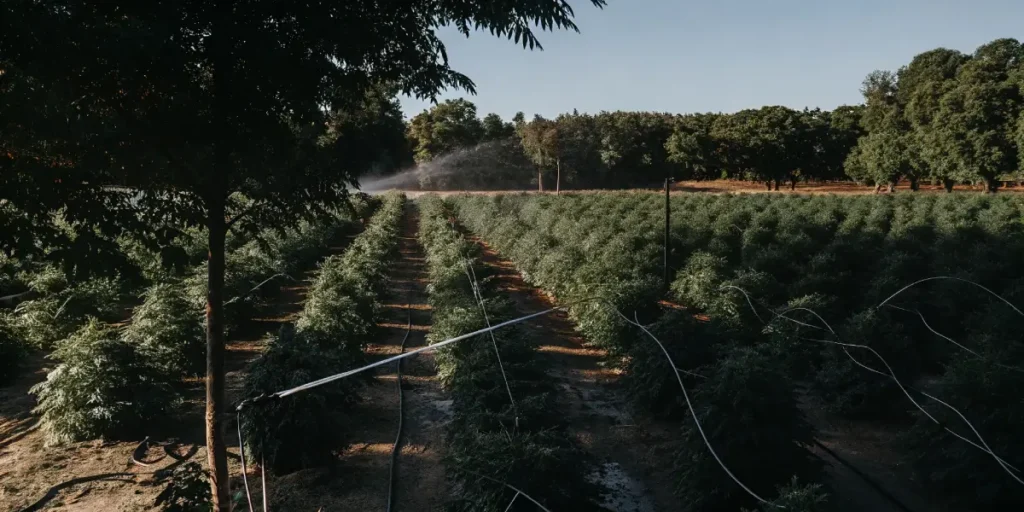
Managing Humidity for Indoor Cannabis Plants
Humidity plays a significant role in indoor cannabis cultivation. Managing humidity for indoor cannabis plants ensures they remain healthy and productive. Too much or too little can lead to problems like mold or stunted growth.
Using a hygrometer helps track humidity levels. This simple tool provides real-time data, allowing for timely adjustments. Humidifiers and dehumidifiers can then be used to maintain optimal levels.
Managing humidity for indoor cannabis plants also involves knowing the relationship between temperature and humidity. As temperatures rise, humidity levels may fluctuate, requiring adjustments to maintain balance. Monitoring these variables closely helps create a stable growing environment.
Good ventilation is essential when managing humidity for indoor cannabis plants. Proper air exchange prevents moisture buildup and distributes humidity evenly. Installing exhaust fans can help remove excess moisture and maintain a fresh atmosphere, conducive to plant health.
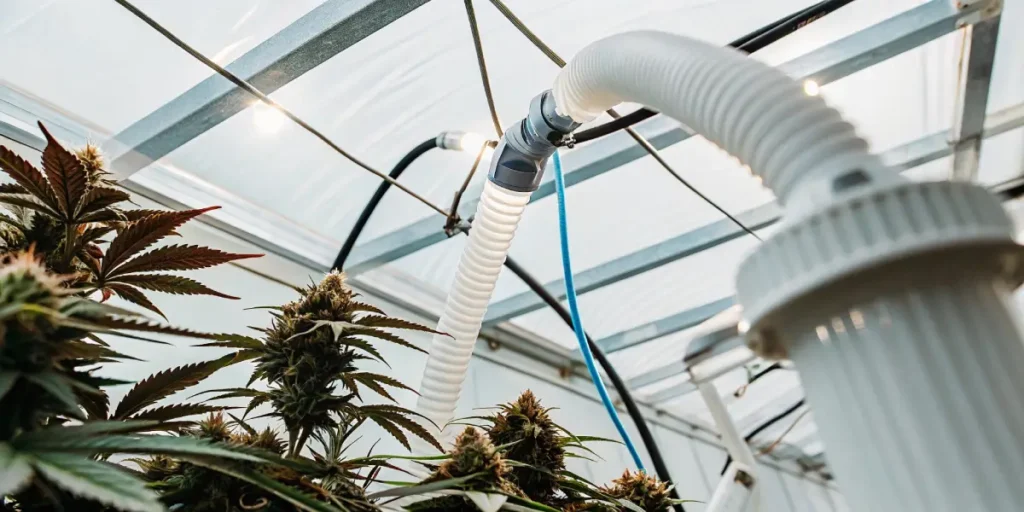
FAQs
How often should I water my indoor cannabis plants?
Watering frequency for indoor cannabis plants depends on several factors, including the plant’s size, growth stage, and environmental conditions. Generally, small plants and seedlings require less water than mature plants. Using a moisture meter helps determine when the soil is dry and needs watering.
Avoid watering on a set schedule without checking the soil’s moisture level. Overwatering is a common mistake, leading to root rot and other issues. Allow the top inch of soil to dry out between waterings to prevent these problems. Remember, every strain is different; some, like Blue Dream, need more precise care.
Knowing your growing medium is also crucial in determining how often to water indoor cannabis plants. Coco coir, for example, retains moisture differently than soil and may require a different watering frequency. Tailoring your approach to the medium used can optimize water management.
Considering the plant’s lifecycle is essential when deciding how often to water indoor cannabis plants. During the flowering stage, plants may require more water to support bud development. Adjusting water schedules accordingly ensures plants receive the necessary resources for healthy growth.
What are the best ways to conserve water for outdoor cannabis plants?
Conserving water in outdoor cannabis cultivation involves strategic planning. Mulching is an effective method, helping retain soil moisture and reducing the need for frequent watering. Organic materials like straw or wood chips are excellent choices for mulch.
Installing a drip irrigation system can also conserve water. This system delivers water directly to the plant’s roots, minimizing evaporation and runoff. Adjusting the watering schedule based on weather conditions further optimizes water use. Consider the needs of your specific strains, such as The Purps, when planning your irrigation strategy.
Rainwater harvesting is another excellent way to conserve water for outdoor cannabis plants. Collecting rainwater in barrels for later use can significantly reduce dependency on traditional water sources. This practice is both environmentally friendly and cost-effective.
Soil amendments, such as adding organic matter, can improve water retention and reduce the need for frequent watering. Amending the soil with compost or peat moss enhances its ability to hold moisture, supporting healthy plant growth with less water input.
How do I manage humidity for indoor cannabis during different growth stages?
Managing humidity for indoor cannabis plants involves adjusting levels based on the plant’s growth stage. Seedlings and clones thrive in higher humidity, around 65-70%. As plants mature, reduce humidity levels to 40-60% to prevent mold and mildew.
Using humidifiers or dehumidifiers helps maintain these levels. Regularly monitor with a hygrometer to ensure consistency. Good air circulation is also crucial. Fans help distribute air and keep humidity levels even, providing a conducive environment for strains like Gorilla Glue.
During the flowering stage, managing humidity for indoor cannabis becomes even more critical. Lowering humidity levels to around 40-50% helps prevent mold formation on buds. Consistent monitoring and adjustments ensure optimal conditions for flower development.
Implementing a vapor pressure deficit (VPD) strategy can also enhance humidity management for indoor cannabis. VPD considers both temperature and humidity to optimize plant transpiration and growth. Aligning VPD with growth stages supports healthy development throughout the plant’s lifecycle.
What are the signs of overwatering in cannabis plants?
Overwatering is a common issue that can lead to several problems. Signs include yellowing leaves, drooping, and a general lack of vigor. The soil may also stay wet for extended periods, leading to root rot.
If you notice these signs, check the soil’s moisture level. Allow it to dry out before the next watering. Adjust your watering schedule based on plant needs and environmental conditions. Remember, strains like Blue Dream are particularly sensitive to overwatering.
Another sign of overwatering is the presence of algae on the soil surface, which indicates excess moisture. If left unaddressed, it can lead to nutrient deficiencies and hinder plant growth. Regularly inspecting the soil’s condition helps prevent these issues.
Overwatering can also cause root systems to become oxygen-deprived, leading to stunted growth. Ensuring proper drainage and aeration in your growing medium helps prevent waterlogged conditions and promotes healthy root development.
What irrigation system is best for outdoor cannabis cultivation?
The best irrigation system for outdoor cannabis cultivation depends on specific needs and environmental conditions. Drip irrigation is favored for its efficiency and targeted watering approach. It minimizes water waste and prevents runoff.
In areas with limited water supply, this system is invaluable. Sprinkler systems can also be used but may require adjustments to reduce evaporation and ensure even distribution. Consider the characteristics of your chosen strains, like The Purps, when selecting an irrigation system.
For large-scale operations, pivot irrigation systems may be the best choice for outdoor cannabis cultivation. These systems cover extensive areas, providing uniform water distribution and reducing manual labor. However, they require significant initial investment and maintenance.
In regions with high winds, low-pressure irrigation systems can be beneficial. These systems minimize water loss through evaporation and deliver moisture directly to plant roots. Selecting the appropriate system tailored to local conditions ensures efficient and sustainable water management.


